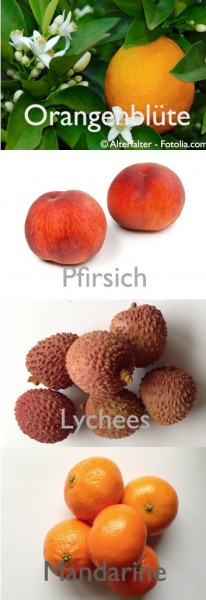
This slightly sparkling, fruity and fragrant sweet wine from Piedmont, which has been known since the Middle Ages, should in no case be confused with the slightly sweet Asti Spumante. The production of these two DOCG wines is almost the same: Moscato Bianco grapes (Muscat Blanc à Petits Grains) are pressed, the resulting must is clarified and then immediately cooled until the time of further processing. In order to maintain the natural carbon dioxide the several weeks long fermentation takes place in closed tanks. When the desired residual sweetness is reached, the fermentation is interrupted by cooling.
But here the similarities end. Moscato d’Asti differs from the Asti Spumante by lower alcohol content of 4.5% to 6.5% (vs. 6% – 9.5%), lower carbonic acid pressure of 1 to 1.7 atmospheres (vs. 3.5 – 4) and higher potential alcohol content of 10% (vs. 9%). In addition, the indication of the vintage in the Moscato d’Asti is the rule, while this is rarely found at Spumante. Due to the higher carbonic pressure, the spumante requires a champagne cork, the Moscato d’Asti is content with a normal cork closure. The main difference between the two, however, is that only the ripest, most aromatic grapes are processed for Moscato d’Asti, which are predominantly from excellent, often lime-rich vineyards of the Langhe mountains.
As the Moscato d’Asti shows more flavor and fruit, it tastes less sweet than the Asti Spumante, although the latter shows less residual sugar than the Moscati d’Asti. With its delicate pearls and its fruity and floral-scented aromas, Moscato d’Asti matches perfectly to cream bavaroise.
There also exists the Asti Spumante Metodo Classico, which is fermented in the bottle, according to the traditional method. The DOCG rules permit a lower maximum yield per hectare and an alcohol content of 6% to a maximum of 8% for this wine. Made from rosinated, shriveled grapes is the Moscato d’Asti Vendemmia Tardiva with at least 11% vol. Alcohol, corresponding to a Passito. Although a few producers make bottle-fermented high quality Asti Spumante, the vast majority of the approximately 80 million bottles produced each year come from industrial mass production. Moscato d’Asti, on the other hand, is mainly produced by smaller wineries – about four million bottles a year, and is also considered to be of higher quality.